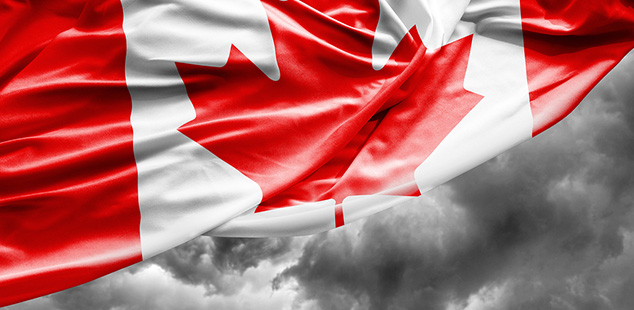
Most people understand that you never really see a recession coming, you find out about it once your country is already mired in it. Well Canada just got the memo when data from earlier this year was analyzed and it was determined that the Canadian economy entered a recession in the first half of 2015.
This marks the second official recession that Canada has entered into in the past seven years. The data shows the 2015 numbers being the weakest for the country since the 2008 financial crisis.
Yahoo News is quick to point out that “the data reflects fears about the health of the global economy as more gloomy evidence emerged of a slowdown in China, a main engine of growth worldwide.”
Canadian Prime Minister Stephen Harper agrees that his country is simply one of the first, and that all global powers should be prepared for similar fates.
“We are living, once again, in a time of ongoing global economic instability,” Yahoo News reports Harper as saying.
This news comes at a time where many experts are predicting that the current growth seen in the U.S. is all a bubble created by the Federal Reserve’s Quantitative Easing (QE) policy of just pumping more money into circulation. And just like all bubbles, it will burst, thrusting the U.S. and the rest of the world into recession.
In fact, earlier this year, the firm created by the man who predicted the 1929 stock market crash, the Jerome Levy Forecasting Center, released a report declaring, “Clearly the direction of most of the recent global economic news suggests movement toward a 2015 downturn.” This report was released at a time where large firms like Morgan Stanley and Goldman Sachs were announcing more positive views of the economy. It appears now that the Jerome Levy Forecasting Center may very well have been the ones with the correct vision.
In 2008 it was the housing bubble that caused enormous economic problems. In 2015 it is looking more like the dollar bubble will be the culprit. With the Fed pumping money into circulation, and China and Russia taking aim at the U.S. dollar as the world’s reserve currency, there is good reason to believe that the value of the dollar is heading towards a sharp drop.
Whenever the dollar appears set for a decline, most investors start looking towards gold since there is a historical inverse relationship at play. Dollar goes down, gold goes up. This is why many experts suggest investors have a percent of their portfolios invested in physical gold as a hedge against inflation and a declining dollar.
This news from Canada could certainly be the first domino to fall, especially with the troubling economic news out of China, Japan, and Russia. It was also learned this month the Federal Reserve has decided to delay an increase in interest rates, leading many investors to speculate that the U.S. economy is one of the next dominoes in line.

